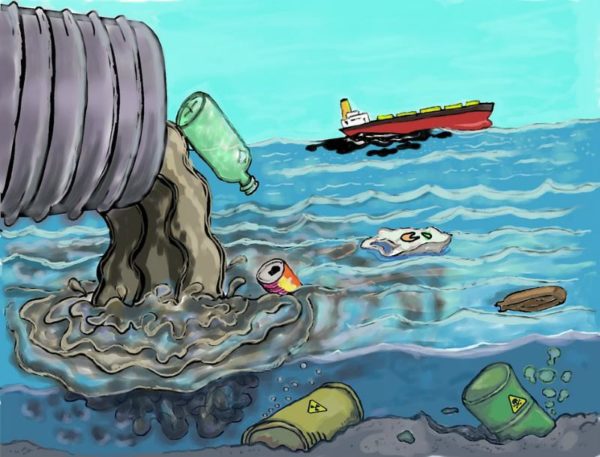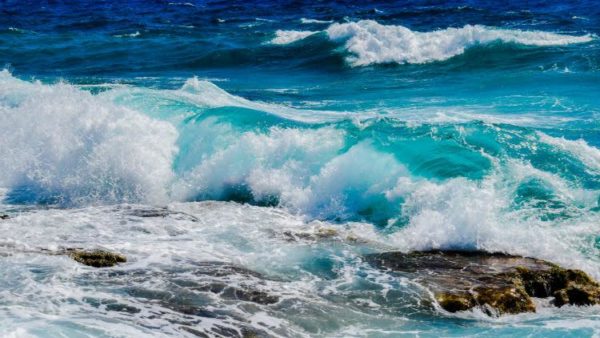People love convenience. Some of the most convenient options tend to be plastic, single-use items. These include things like straws, plastic forks and knives, plates, wrappers, individually sealed snacks and many others. While we like them, they do quite a number on the planet —especially our oceans.
Every year that we use massive amounts of plastic is another year much of that plastic ends up in the oceans. Some estimates claim that over eight metric tons of plastic enter the oceans every year and others put it significantly higher. That constant influx of ever-increasing amounts of plastic can have some pretty devastating effects on both marine and terrestrial life, including people.
The oceans help protect our environment and maintain our world the way it is. As famed explorer Sylvia Earle likes to say, “No water, no life. No blue, no green.” This means the oceans are what allows life to flourish on our planet. The more polluted they become, the harder it is for our oceans to thrive. While we aren’t in danger of seeing them evaporate, we may be seeing another mass extinction event, and that would mean the seas could become essentially lifeless.
Plastic Moving Up the Food Chain
Anyone who decides to travel throughout the oceans sees the trash that floats along in the currents. Some of these are large enough trash clusters that they’ve become their own islands. The largest one — the Great Pacific Garbage Patch — is a mix of micro-plastics suspended throughout the ocean currents and larger pieces of trash floating on the surface that tend to congregate in specific areas.
While we don’t know how big these patches of trash are, we do know that the micro-plastic particles are slowly and steadily making their way through the food chain. These micro-plastic pieces are harder to measure and determine because they’re so tiny. They’re smaller than your fingernail and some of them are all the way down to microscopic level.
These tiny pieces are the ones that are most commonly ingested by marine life. They’re consumed by a vast range of animals, including coral. Most importantly, zooplankton tends to eat the smallest plastic pieces. As an integral part of the food chain, whatever they eat gets eaten by other, larger animals. As they die off, we will start to lose one of the world’s most significant carbon sinks and oxygen producers.
Plastic Isn’t the Only Problem
If you ever see any kind of oil or chemical spill in the ocean or on the shore, it’s important to report it immediately. There are plenty of laws in place to prevent people and companies from doing exactly that.
You probably remember the Deepwater Horizon oil spill from 2010. You may not remember much about the cleanup, though. That’s because oil is notoriously difficult to clean up — especially a spill that occurred in the open ocean like that one. What happened is that most of the 4.9 million barrels of oil that escaped were sprayed with emulsifiers and eaten by ocean bacteria. Even so, much of the Gulf is now devoid of life, and the oil spill had a strong role to play in that.
But dumping oil and chemicals into the ocean can have a dramatic effect on marine life and people as well. Sewage is another common pollutant in the ocean, especially in developing countries that don’t have a system that cleans the wastewater before dumping it into the sea or rivers.
The Impacts
The ocean pollution is creating a serious threat to marine life. It damages everything from seabirds to coral reefs and can especially impact the zooplankton and phytoplankton that make up the bottom of the food chain. As we continue to damage the food chain and pollute the ocean waters, some animals may disappear forever. Those that don’t go extinct will have to adapt at a rapid pace to stay alive. The life forms we end up with maybe drastically different from the ones we see today.
That also means we may have to dramatically alter the way we use the oceans. The food we harvest from them may no longer be available in the near future and we could be forced to give them up, especially if the accumulation of plastics and pollutants becomes a hazard for human health.
We don’t know what the results of climate change and our constant pollution of the planet will be. All we know for sure is that we are changing things and that the ocean’s bounty is steadily dwindling. Without prompt action, we may lose our blue.

This Women of Green guest blog is by Megan Ray Nichols. Megan writes about many environmental topics including, renewable energy, conservation and sustainability. She invites you to join the discussion on her own blog, Schooled By Science.
Women of Green is TURNING UP THE VOLUME of the feminine voice on the planet in order to create the world we know is possible.


